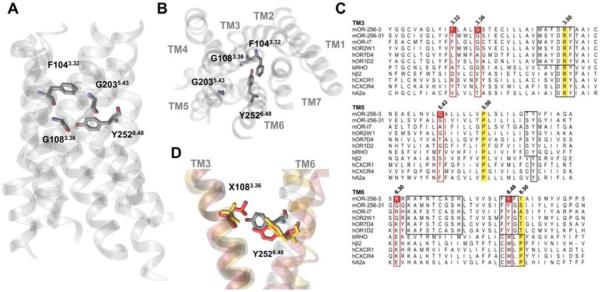Figure 1.

Binding cavity residues that interact with agonists according to the model. (A) & (B) Front view and top view, respectively, of MOR256-3 highlighting selected residues belonging to the binding cavity. (C) Alignments highlighting equivalent roles of certain residues within TM3, TM5 and TM6 in olfactory and non-olfactory GPCRs. The Ballesteros-Weinstein notation is shown for each TM and residues corresponding to the reference position (x.50, with x the TM number) are highlighted in yellow in the alignment. Conserved motifs in ORs and GPCRs are boxed in black. Boxed in red are the residues corresponding to those mutated in this study. (D) The position of Y2526.48 shifts as a function of residue X1083.36; wt (wild type, G108) is shown in gray, X108= A (G108A) in yellow and X108=L (G108L) in red.
